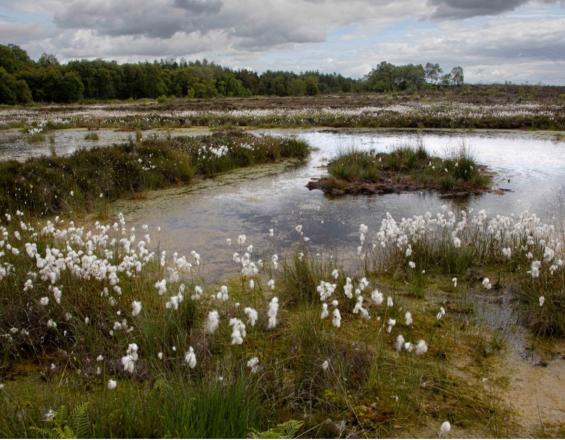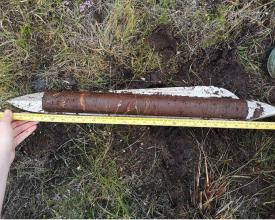
Cloncrow Bog Natural Heritage Area - restoring a degraded Irish midland raised bog

Ireland has ca. 1.46 Mha of peatlands. Today about 85% of all peatlands are degraded through conversion to agriculture and forestry, extraction and horticulture. The pilot site is part of a Natural Heritage Area. The site (33 ha) consists of drained high bog and cutover bog. It was impacted by 28,000 m of extensive ditching in the high bog and cutover as well as legacy effects of bog cutting. This scenario provided an opportunity for restoration works within NWE Interreg Care-Peat project. Restoration activities were successfully completed in October 2020. The existing drain network was blocked with earthen dams at a ratio of 1 dam for every 10 cm rise in elevation. It was completed by diggers and resulted in exposed areas of bare peat. It formed experimental areas for Sphagnum transfers. Monitoring of restoration success is ongoing with assessment of dam and bunding integrity. A total of 24 collars plots are sampled monthly. Overall the carbon stocks at the site are estimated at 42,074 Mg/ha.
Impacts
Restoration works completed in 2020 had immediate effects of raising the water level to within 10cm of the surface which resulted in a rapid response by peatland-associated vegetation in both areas of the pilot site.
An important part of the project was also to involve the local community in peatland restoration. In October 2021, we invited two groups of people to establish Sphagnum trial transfers - students and members of the public. Both events were highly successful and the adult public meeting expressed interest in sharing their knowledge with additional local groups for trial this technique at other locations.
The project also enabled the development of methods to monitor greenhouse gas fluxes. Rewetting at the pilot site is producing desired results and we continue to monitor the effects of rewetting on GHGs.
Lessons learnt:
- Proper hydrological planning before restoration is key to success
- Community involvement and demonstrations reduced anxiety toward future rewetting.




